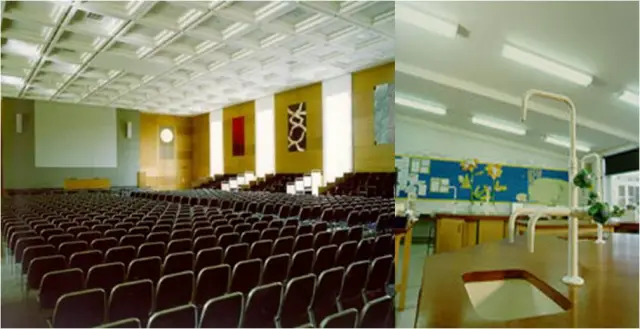- A minimum level of illumination of 10 lm / sq. ft. Over the teaching area should be provided from artificial lighting.
- The recommended average level of artificial lighting over the classroom should not be less than 30 lm / sq. ft.
- The lighting fittings should be so designed that they do not cause troublesome glaze. The maximum tolerable brightness (luminance) of the lighting fitting as seen from a normal viewing angle should not exceed an average of 1000 ft-l.

- The artificial lighting system in class room will depend upon the reflectance, characteristics of walls, ceiling, and floor in the room.
- The lighting system should be placed in such that it should emit light in all directions.
- Light must be distributed around the ceiling and walls to ensure a satisfactory measure of brightness
- The filament lamp is a cheap and simple light source, easy to maintain and to replace and can be used,
- It has a disadvantage that its efficiency as regards conversion of electrical energy to light is low and therefore the running cost of filament lighting installation are relatively high as compared to the fluorescent lamps.
![[filefield-description]](https://www.archinomy.com/wp-content/uploads/case-studies/2011/classroom-with-filament-lamp.jpg)
- It is desirable that the level of illumination on the chalkboard should be greater than on that on the surrounding wall in order to command attention and also to ease of seeing.
- The level of illumination on the chalkboard should be of the order of 600-100lux and certainly not less than 300lux

Leave a Reply
You must be logged in to post a comment.